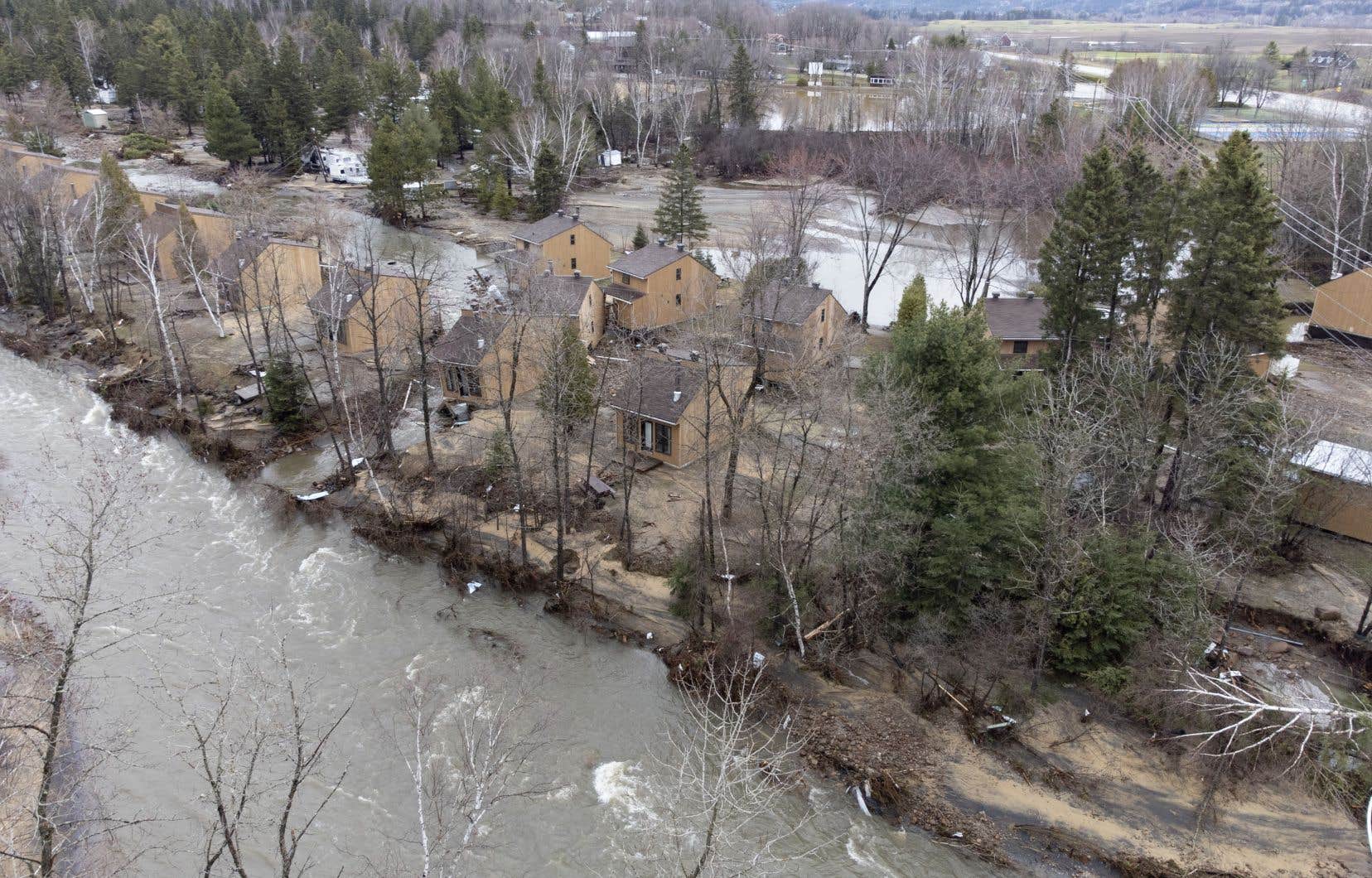Three times as many Quebecers would live in areas at risk of flooding, according to the new mapping proposed by the government which invites the population to decide on the modernization of the rules concerning flood zones.
Citizens are asked to give their opinion on several new regulations, including the modernization of the mapping of flood zones and the rules which will govern flood protection works (OPI), such as dikes or anti-flood walls.
A new way of making cards
Approximately 22,000 housing units in Quebec are currently located in mapped flood zones. With the new maps, 77,000 homes, approximately 2% of the population, would be found in such an area.
Currently, the mapping of flood zones presents recurrence ratings of “0-20 years” and “20-100 years” while the new generation of maps offers a new classification with four risk categories: low, moderate, high and very high.
For example, “very high” corresponds to a risk of more than 70% of being flooded at least once over a 25-year period and to a water intensity of more than 60 centimeters during a flood. When water reaches this intensity, emergency vehicles can no longer travel.
There is nothing in the proposed regulations that would force a local resident to relocate.
However, each risk level corresponds to new regulations regarding the construction and renovation of residences located in these zones.
For example, a homeowner who owns a home in a very high-risk area would not be allowed to build a new residence or rebuild a home that has been destroyed.
This owner could, however, carry out renovations or modifications such as changing the location where the electrical entrance is located, or setting up rooms on the second floor, in order to make his residence more resilient to flooding.
In the “high” zone, new construction would be prohibited. However, certain exceptions are provided for and these should be accompanied by a risk management plan.
“These new maps, based on the most recent scientific knowledge, will take into account both the frequency of floods, their intensity depending on the water depth reached, the presence of ice jams, as well as the impacts of climate change », We can read in the popular documents of the Ministry of the Environment.
New framework for OPIs
Currently, there are around thirty flood protection works (OPI) in the territory.
These are concrete anti-flood walls or even dikes like that of the City of Sainte-Marthe-sur-le-Lac, in the Laurentians, which gave way in the spring of 2019. The flood had caused considerable damage and necessitated the emergency evacuation of thousands of people on approximately 50 streets.
The government intends to impose a series of measures to ensure the security of this type of infrastructure, including the establishment of a public register.
Municipalities should also carry out a characterization study and distribute the summary. The one-time cost of such a study is estimated at $85,000.
Municipalities that have OPIs should also integrate prevention measures into their civil security plan.
The new regulations also provide standards for the monitoring and maintenance of OPIs.
A billion damages
In a statement, the Ministry of the Environment said the proposed regulations are necessary due to the magnitude of climate change.
The ministry recalled that in 2017, the flood forced the evacuation of more than 4,000 people and affected 293 municipalities. In 2019, more than 10,000 people in 240 municipalities were evacuated due to flooding while thousands of residences were flooded.
In the spring of 2023, in Baie-Saint-Paul and Saint-Urbain, in Charlevoix, nearly 300 properties were affected by flooding.
The government estimates that the 2017 and 2019 floods alone cost the state more than $1 billion.
